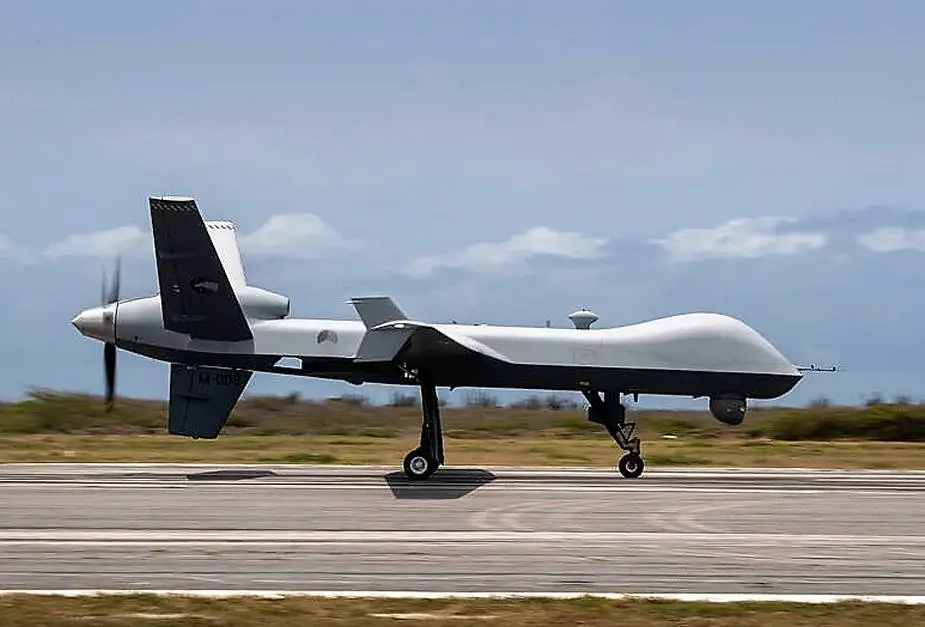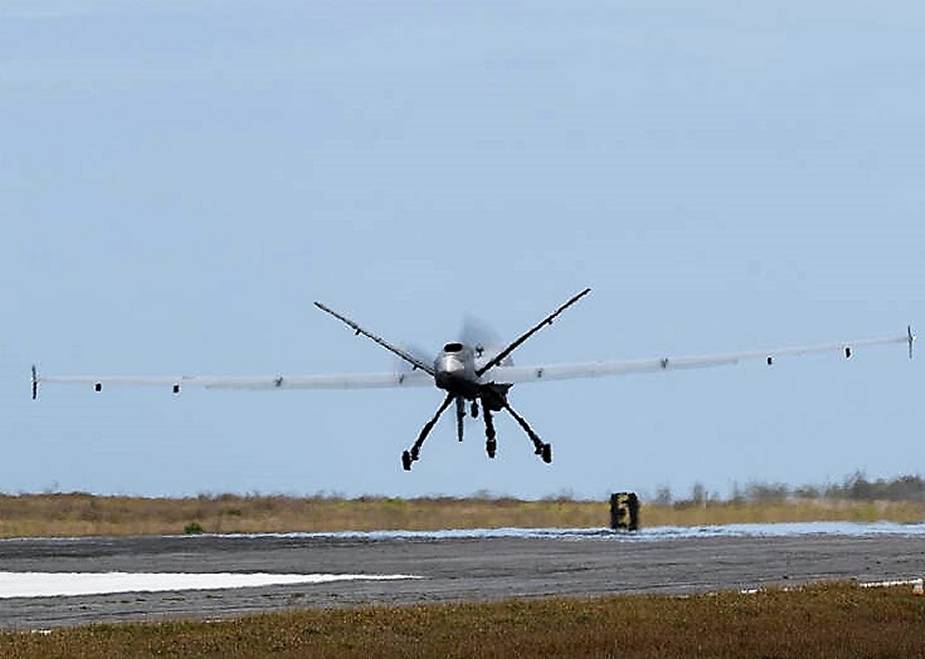Breaking news
Netherlands Air Force performs first flight of MQ-9 Reaper UAV.
As the Netherlands Defense Ministry announced on April 20, a milestone in the history of the Dutch armed forces took place: a General Atomics MQ-9 Reaper made its 1st training flight. This happened on April 20 from Curaçao, where the Air Force will test the unmanned reconnaissance aircraft in the coming period. In addition, the unit can directly collect intelligence in support of (military) organizations in the Caribbean.
Follow Air Recognition on Google News at this link
 A Dutch Air Force General Atomics MQ-9 Reaper made its 1st training flight on April 20 from Curaçao (Picture source: Dutch MoD)
A Dutch Air Force General Atomics MQ-9 Reaper made its 1st training flight on April 20 from Curaçao (Picture source: Dutch MoD)
The Reaper was piloted by a pilot and sensor operator from a ground station during a 2-hour flight. The system uses a satellite connection for this. The 40-strong detachment will now start working on the so-called operational test & evaluation phase. Commander 306 Squadron Lieutenant Colonel Boudewijn Roddenhof said: “We are testing the aircraft and ground station, but also the radar and cameras. We use this to test our operating concept in practice and discover where the limits lie. We arrange the associated procedures as efficiently as possible.”
The squadron basically has the rest of the year for this phase. After that, the unit can be used 12 hours a day, 6 days a week. That is possible anywhere in the world. The Air Force flies the missions from home base Leeuwarden. From there most pilots and sensor operators do their work. Only a small detachment consisting of a few pilots, sensor operators, mechanics and IT specialists is then stationed in the deployment area. In this case, it is adjacent to Hato airport. “In the long run, the flight crew on location only takes care of the take-off and landing of the aircraft,” explains Roddenhof. “The crew in the Netherlands carries out the mission. I expect we'll be able to operate that way sometime in the second half of the year. The infrastructure at Leeuwarden should be ready for that.”
 The Reaper was piloted by a pilot and sensor operator from a ground station during a 2-hour flight (Picture source: Dutch MoD)
The Reaper was piloted by a pilot and sensor operator from a ground station during a 2-hour flight (Picture source: Dutch MoD)
The (information) weapons system can observe for a long time, both over land and at sea. This is fully in line with the Ministry of Defense's wish to act in an information-driven manner. As soon as the unit with the aircraft is ready for deployment, it will in principle support the Commander of the Navy in the Caribbean, the local authorities and the Coast Guard. Roddenhof: “One of the main tasks of the Commander of the Navy in the Caribbean is to promote the international legal order and stability. We can provide information for this. Based on this, people are better able to determine which resources are deployed during counter-drug operations, for example.”
In the coming period, 2 more MQ-9s will be built on Curaçao and used for the test and evaluation phase. The 4th aircraft is still in the United States. There it will undergo final acceptance and transfer tests over the next 2 months. The MQ-9 will then come to the Netherlands with 2 ground stations. The aircraft will remain in storage at Leeuwarden Air Base for the time being. Both ground stations will be made operational in the second half of the year. From that moment on, the aircraft over the Caribbean can also be controlled from Leeuwarden.
 Two more MQ-9 Reapers will be built on Curaçao Air Base and used for the test and evaluation phase (Picture source: Dutch MoD)
Two more MQ-9 Reapers will be built on Curaçao Air Base and used for the test and evaluation phase (Picture source: Dutch MoD)
General Atomics MQ-9 Reaper
The General Atomics MQ-9 Reaper (sometimes called Predator B) is an unmanned aerial vehicle (UAV) capable of remotely controlled or autonomous flight operations developed by General Atomics Aeronautical Systems (GA-ASI) primarily for the United States Air Force (USAF). The MQ-9 and other UAVs are referred to as Remotely Piloted Vehicles/Aircraft (RPV/RPA) by the USAF to indicate their human ground controllers.
The MQ-9 is the first hunter-killer UAV designed for long-endurance, high-altitude surveillance. In 2006, the then–Chief of Staff of the United States Air Force General T. Michael Moseley said: "We've moved from using UAVs primarily in intelligence, surveillance, and reconnaissance roles before Operation Iraqi Freedom, to a true hunter-killer role with the Reaper."
The MQ-9 is a larger, heavier, and more capable aircraft than the earlier General Atomics MQ-1 Predator; it can be controlled by the same ground systems used to control MQ-1s. The Reaper has a 950-shaft-horsepower (712 kW) turboprop engine (compared to the Predator's 115 hp (86 kW) piston engine). The greater power allows the Reaper to carry 15 times more ordnance payload and cruise at about three times the speed of the MQ-1. The aircraft is monitored and controlled by aircrew in the Ground Control Station (GCS), including weapons employment.

























